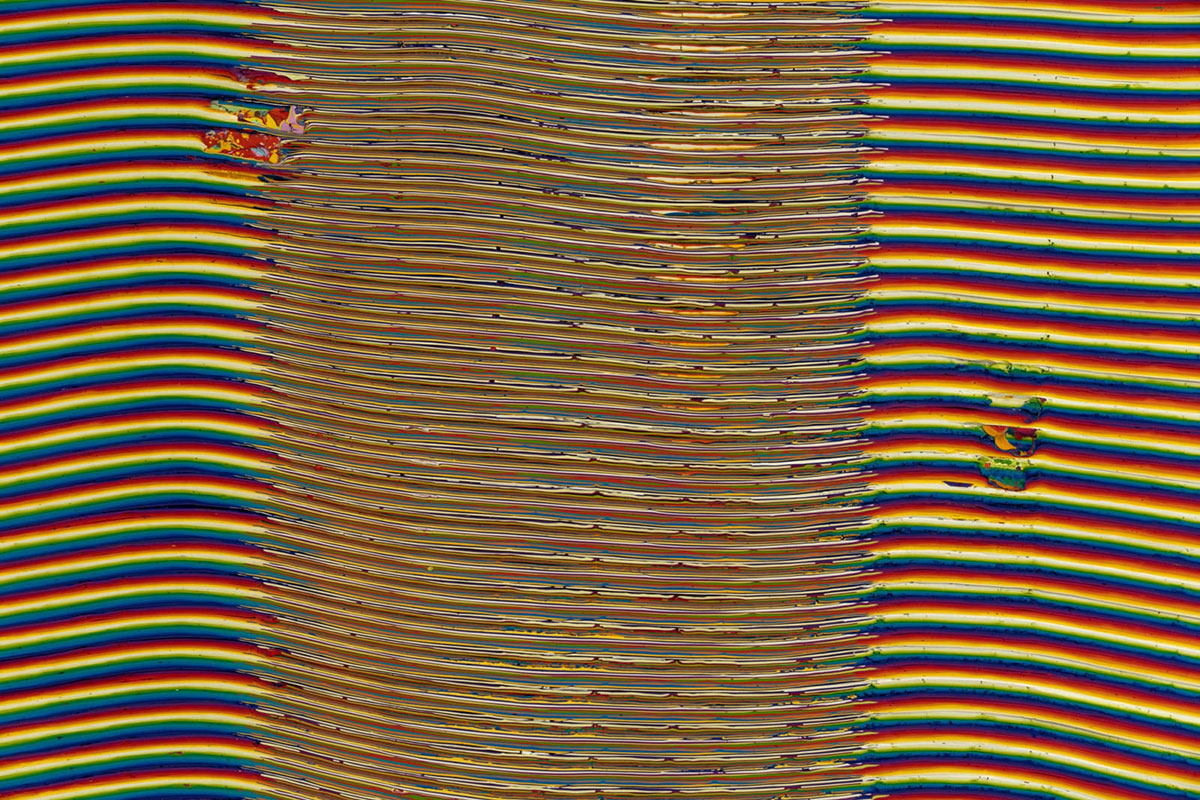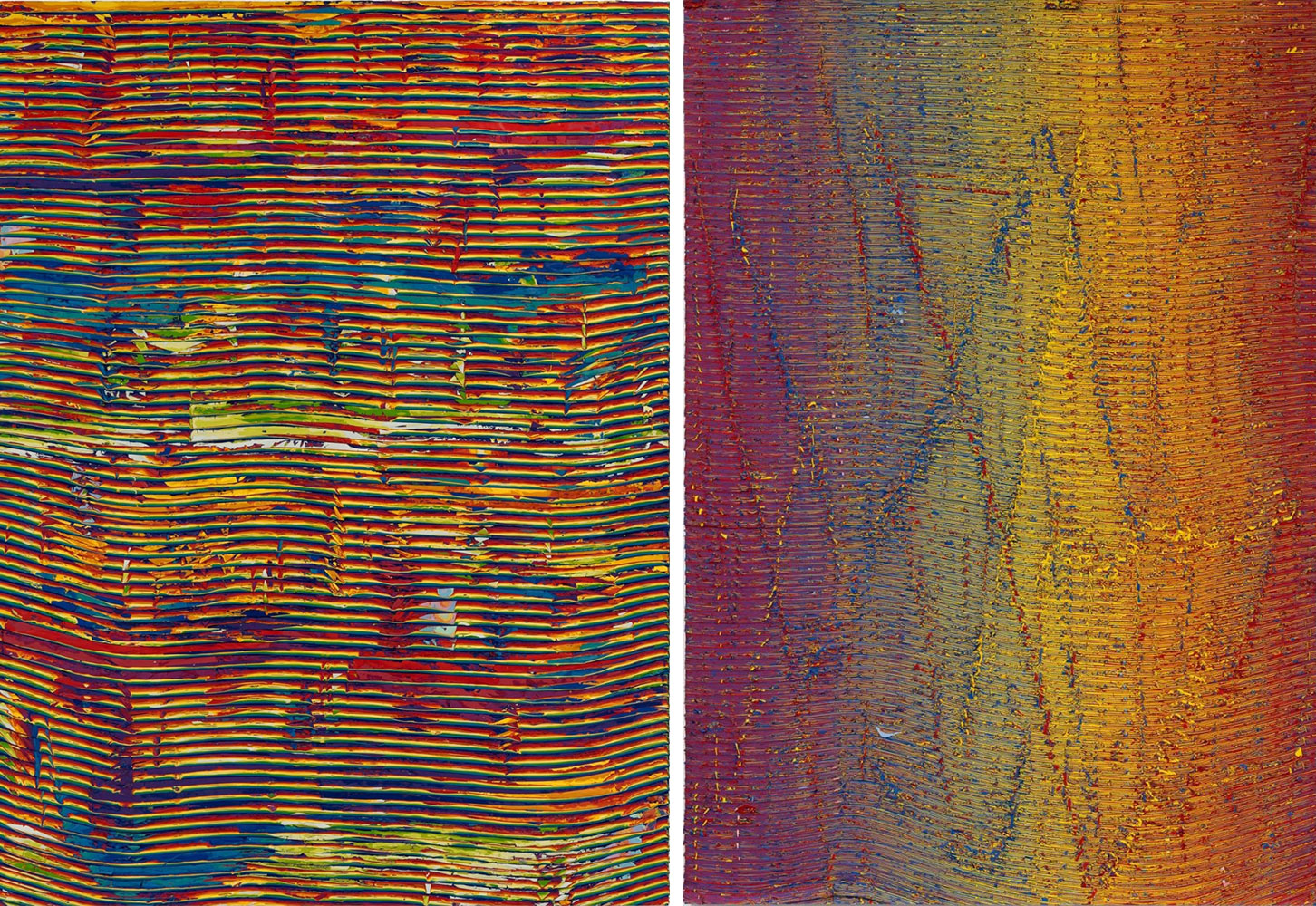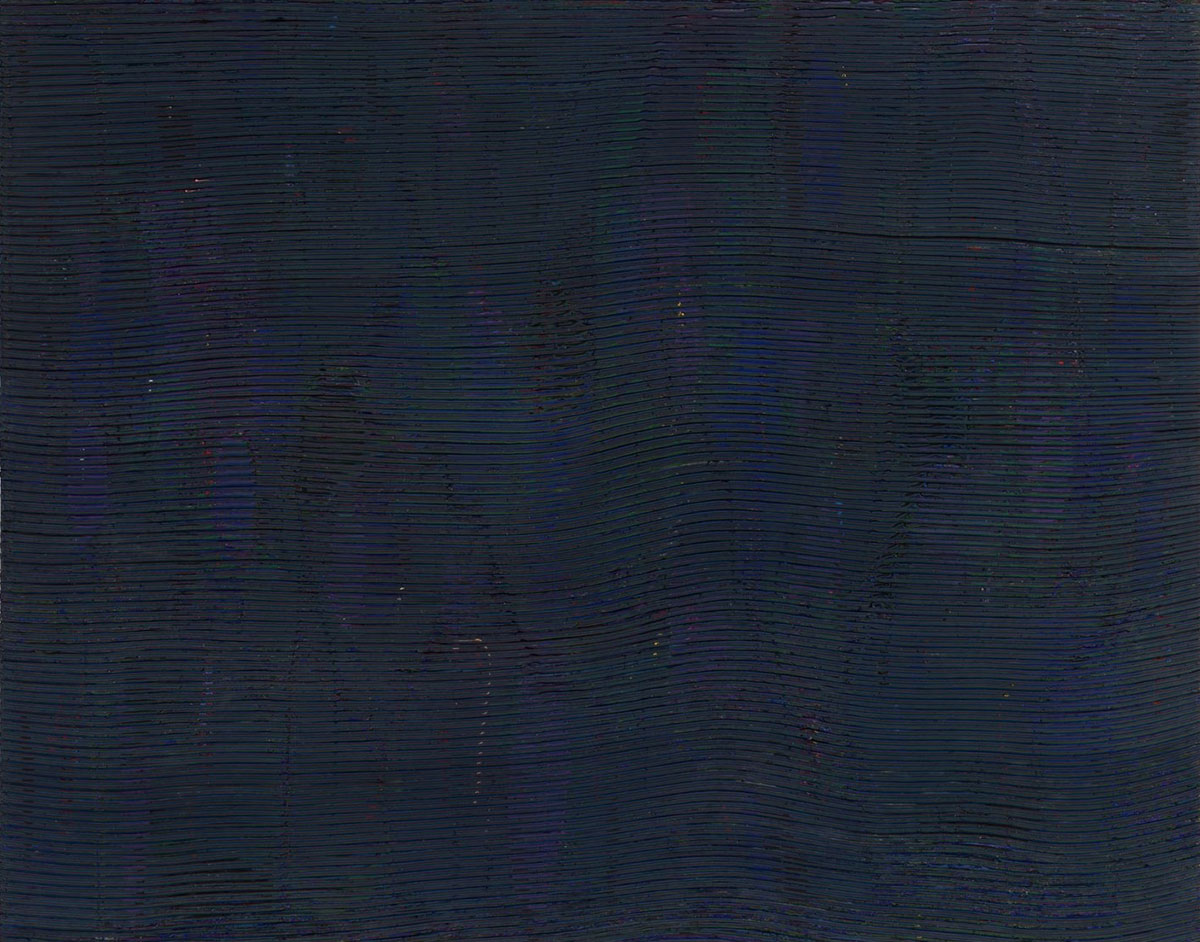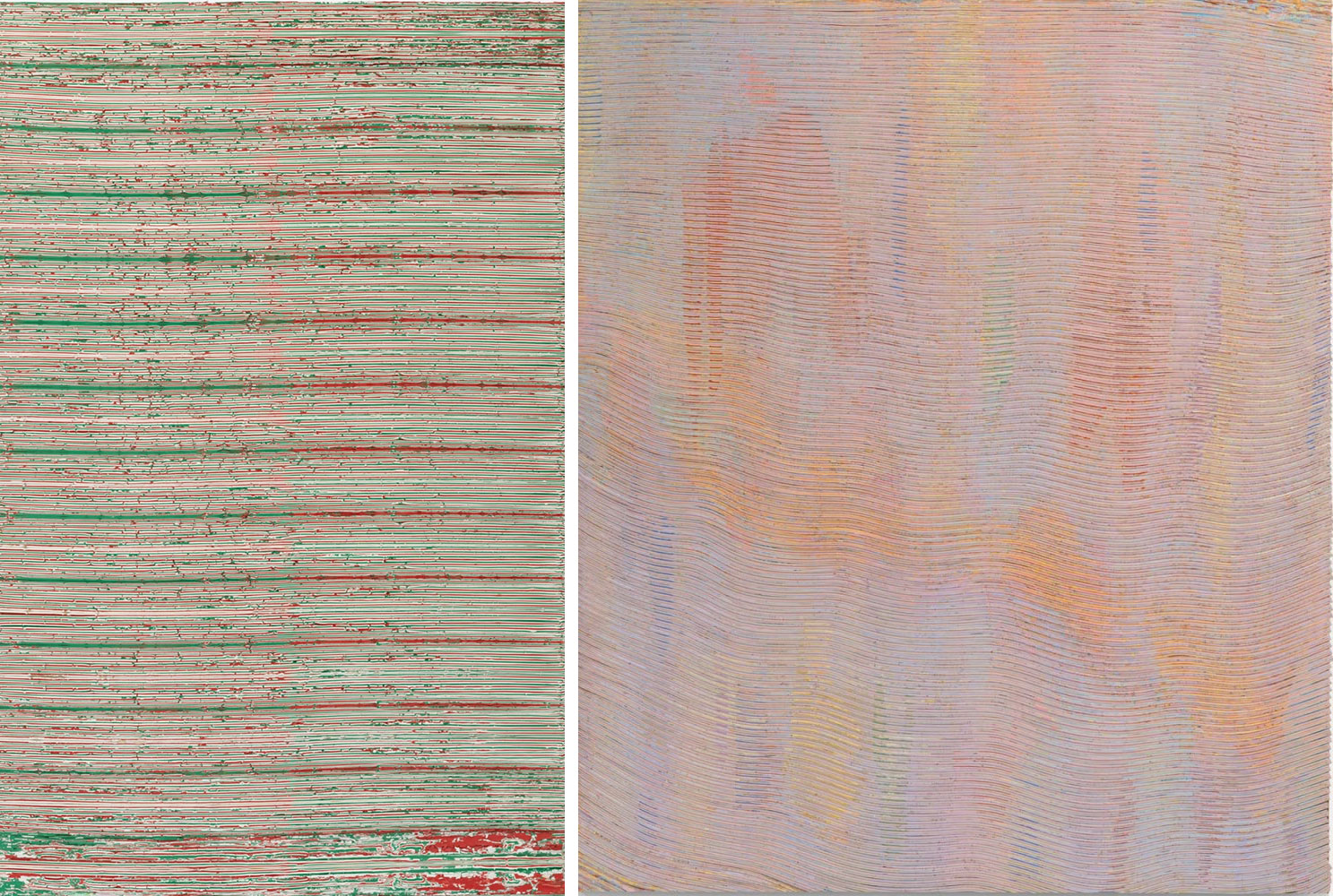PRESENTATION: Loriel Beltrán-Calor y Color
 Loriel Beltrán creates sculptural accumulations of paint and color that defy traditional notions of artistic media. Poetically merging painting and sculpture, the artist states that his works “resist becoming images” and instead materialize color in its full complexity. Situating his work between the legacy of Latin American modernism and postwar painting in the United States, Beltrán dissolves distinctions between image and object, surface and substance, plane and structure. While the artist considers perceptual effects, he remains equally invested in issues of materiality, process, and industry, foregrounding artistic labor and the residue it leaves behind.
Loriel Beltrán creates sculptural accumulations of paint and color that defy traditional notions of artistic media. Poetically merging painting and sculpture, the artist states that his works “resist becoming images” and instead materialize color in its full complexity. Situating his work between the legacy of Latin American modernism and postwar painting in the United States, Beltrán dissolves distinctions between image and object, surface and substance, plane and structure. While the artist considers perceptual effects, he remains equally invested in issues of materiality, process, and industry, foregrounding artistic labor and the residue it leaves behind.
By Dimitris Lempesis
Photo: Lehmann Maupin Gallery Archive

Loriel Beltrán presents recent works in his solo exhibition “Calor y Color”. Beltrán was born in Venezuela and immigrated to the United States as a teenager, and he has cited a number of Venezuelan artists as significant influences. Beltrán locates his work at the intersection of a variety of art histories and traditions across the Americas He identifies points of connection between the physicality of his painted strips and Gego’s notion of the line as object, while his perceptually complex compositions also gesture to histories of the Op and Kinetic art movements in Venezuela, with the work of artists Jesús Rafael Soto and Carlos Cruz-Diez embedded in his visual memory. At the same time, he identifies significant points of connections with a number of postwar United States artists, evoking Jack Whitten’s material experimentations, Lynda Benglis’s pours, Agnes Martin’s organic grids, the notion of the flatbed picture plane in Jackson Pollock’s work, Mark Rothko’s exploration of the color’s expressive potential, and Robert Morris’s engagement of chance and gravity. Works in the exhibition “Calor y Color” consider the interplay between particular combinations of colors, often indicated by technical abbreviations in Beltrán’s titles. Several works exhibited here, such as “PSMYLV’ and “Chromatic Black”, consider particular pairings or groupings of colors to explore the optical vibrations they both suggest and create. Others, such as “Large Refractions (FS)”, “Full Spectrum Contrast” and “Full Spectrum (pools and shards)”, allude to the complete range of possible hues visible to the human eye. Beltrán has described the resulting works as “panels of code,” and rather than depicting a single image, they suggest a distinct visual language, replete with numerous possibilities for imagery. The result of a meticulous process, Beltrán’s surfaces are composed of layers of paint that have dried to create vibrating optical effects. The artist produces custom molds and pours paint into them, allowing the paint to harden and dry over time. He sometimes integrates objects into his molds—including leftover materials or detritus from his studio—to insert “interruptions” in his compositions. Beltrán repeats this process for several months, or even years, allowing layers of paint to coagulate and accumulate. The artist then removes the mold and slices the resulting object—a hardened block with swirls and layers of color—into strips using a custom-built machine. The strips are then arranged into planar compositions, which he adheres to a wooden substrate. Here, as throughout his practice, Beltrán examines how color and light attach themselves to form to suggest tactile, physical presences. Observing the etymological connections between the words calor and color, the artist is struck by the way that color, while produced by light, also maintains connections to matter–emanating from the sun, extracted from minerals, produced as pigment. Beltrán’s practice grew out of his initial fascination with the buildup of dried paint on his palette, and his works draw upon an aesthetics of accumulation, reflecting a similar attention to the remnants of artmaking and the traces that color leaves behind. As his surfaces accumulate layers of paint, so too do they accumulate layers of memory and meaning. Registering acts of artistic labor and visualizing the passage of time, Beltrán’s works evidence a slow and demanding physical process. The artist has stated that prior jobs in construction, fabrication, and installation continue to inform his artistic practice and his relationship to materiality. Beltrán’s work manifests this labor and physical exertion, and he distinguishes artistic labor from other forms of labor precisely because of its visibility.
Photo: Loriel Beltrán, Full Spectrum Contrast (detail), 2022, Latex paint on panel, 90 x 60 x 2 inches, © Loriel Beltrán, Photo by Zachary Balber, Courtesy the artist and Lehmann Maupin Gallery
Info: Lehmann Maupin Gallery, 501 West 24th Street, new York, NY, USA, Duration: 31/3-29/4/2023, Days & Hours: Tue-Sat 10:00-18:00, www.lehmannmaupin.com/

Right: Loriel Beltrán, Primaries (signs and color), 2021, Latex paint on panel, 100 x 70 inches, © Loriel Beltránm, Photo by Zachary Balber Courtesy the artist and Lehmann Maupin Gallery

![Left: Loriel Beltrán, Large Refractions (FS) [detail], 2022, Latex paint on panel, 108 x 80 x 2 inches, 274.3 x 203.2 x 5.08 cm, © Loriel Beltrán, Photo by Zachary Balber, Courtesy the artist and Lehmann Maupin GalleryRight: Loriel Beltrán, Full Spectrum Contras t[detail], 2022, Latex paint on panel, 90 x 60 x 2 inches, 228.6 x 152.4 x 5.08 cm, © Loriel Beltránm, Photo by Zachary Balber Courtesy the artist and Lehmann Maupin Gallery](http://www.dreamideamachine.com/web/wp-content/uploads/2023/03/2a-2.jpg)
Right: Loriel Beltrán, Full Spectrum Contras t[detail], 2022, Latex paint on panel, 90 x 60 x 2 inches, © Loriel Beltránm, Photo by Zachary Balber Courtesy the artist and Lehmann Maupin Gallery

Right: Loriel Beltrán, Muted, 2018-2020, Latex paint on panel, 80 x 70 inches, © Loriel Beltránm, Photo by Zachary Balber Courtesy the artist and Lehmann Maupin Gallery


